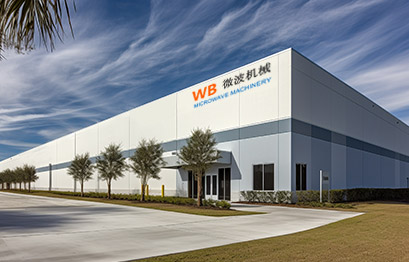The flat twin screw consists of a pair of precision-processed parallel screws and a pair of hollow shafts perpendicular to each other. Through a unique structural design, efficient mixing, conveying and processing of materials is achieved. We produce twin screw products in a complete range of specifications to meet the process needs of different customers. The materials used in the product have been treated with a series of surface treatments to ensure the long life and high performance of the product. We have a professional R&D team and a complete after-sales service system, which can provide customers with full-process services from product design, production to installation and commissioning. We also provide professional technical support and solutions to ensure that customers can solve problems in a timely manner when they encounter problems during use.
Flat twin screw Wholesale
-
Drawing
Parameters/spectroscopy introduction
The material is made of high-quality 38 chromium molybdenum aluminum (38CrMOALA)
Surface hardness
HV: ≥290
Nitriding hardness
HV950~1000
Nitriding depth
0.45~0.7mm
Nitriding brittleness
≤Level 1
Surface roughness
Ra0.4
Screw straightness
0.015mm
Chromium plating hardness after nitriding
≥900HV
Chrome plating thickness
0.05~0.10mm
Dual alloy hardness
60-70HRC
PX-Φ50~200 ?Equi-diameter ratio: L/D=18~25, the screw compression ratio is designed according to different raw materials and different products. The redirectional parallel twin screw can process PVC pipes, re-shaped materials, plates (sheets), modified and soft and hard PVC granulation.
Product Advantages:
The flat twin screw is designed with controllable tightening, which effectively avoids elastic deformation problems in traditional screw transmission systems, thereby achieving higher precision motion control. This feature makes our products more stable and reliable during material mixing and conveying, and improves production efficiency and product quality. In terms of screw surface treatment, we adopt advanced dual alloy spray welding technology, which is a surface treatment process that combines high hardness and good wear resistance. By precisely controlling the spray welding parameters, the dual alloy layer is closely combined with the substrate material to form a solid wear-resistant protective layer. This protective layer can not only effectively resist the wear caused by materials when sliding on the screw surface, but also resist erosion from harsh working conditions such as high temperature and corrosion, thereby greatly extending the service life of the screw. Customers can reduce downtime and costs due to equipment replacement and maintenance, further improving productivity and economic benefits. The design of parallel twin screws also fully considers torque load-bearing capacity and energy consumption efficiency. The unique structure allows the screw to maintain a stable operating state when withstanding large torque, and the optimized transmission efficiency significantly reduces energy consumption. This high load-bearing and low energy consumption can save customers a lot of energy costs during long-term use and improve the sustainability of overall operations.


The company has more than 10,000 square meters of production workshop, more than 60 employees. Since its founding in 1990, it has been committed to the production and research of plastic machinery, while introducing foreign screw machinery technology and technology. Main products: WB-WE series planetary screw, planetary barrel and planetary extruder; SJS series conical double screw, double barrel and double screw plastic extruder; SJ series single screw, single barrel and single screw plastic extruder; Pearl-cotton screw barrel; And all kinds of pipe, sheet, shaped production lines. Is a diversified large-scale professional production base in China, set precision screw barrel and machinery machinery processing plant in one, based on high grade and high-end market, mainly exported to the United States, Germany, Dubai, Vietnam, Thailand and many other countries, the cooperation of customers have many plastic production and construction machinery factory customers, Has become an important supplier of their mechanical parts in China. In line with the principle of reputation first, service first, to provide our customers with cheap and beautiful products. Welcome customers to come to negotiate business and create a career.
Commitment To Superior Quality
-
NewsCHINAPLAS 2025
Booth 5R01(15 April 2025-18 April 2025) The 37th China International Plastics and Rubber Industry ExhibitionChina ? Shenzhen ? Shenzhen International Convention and Exhibition Center?
-
NewsDesign of Wear-resistant Screw for Glass Fiber Reinforced Plastic Injection Molding Machine
The design of the injection molding machine screw needs to consider multiple factors to achieve wear resistance to glass fiber. Here are some design considerations: (1) Material selection: Choose mate...
-
NewsInjection molding machine screw barrel common problems
First: screw fracture generally has several reasons: 1, the design of the screw itself. For example, the size of the screw design is too small and the diameter is not thick enough. 2, cold start tempe...
Inquiry
Contact
Let’s talk with expertise
phone: +86-13905809051 /
Address: No.3, Hope Avenue, North Industrial Zone, Jintang Town, Dinghai District, Zhoushan City, Zhejiang Province, China



 English
English 中文簡體
中文簡體
















